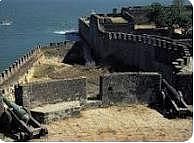Test: The State, Local Government and Union Territories- 2 - Class 8 MCQ
10 Questions MCQ Test - Test: The State, Local Government and Union Territories- 2
How does participatory budgeting seek to make the functioning of local governance institutions more transparent and accountable?
- By allowing citizens to deliberate and negotiate over the distribution of public resources.
- By allowing citizens to play a direct role in deciding how and where resources should be spent.
- By allowing historically excluded citizens with access to important decision-making venues.
Select the correct answer using the codes given below.
Apart from the Central and the State government there is the third type of government in Belgium called the
| 1 Crore+ students have signed up on EduRev. Have you? Download the App |
Daman and Diu is a ________.
In 1830 Belgium declared its independence from _____
Consider the following statements about the 'Right of Information(RTI) Act, 2005 and select one which is not provided for or specially exempted.
Money Bill ____ .
- cannot be introduced in the Council of States.
- needs to be certified as such by the Speaker.
- can be amended by the Council of States.
- President has to assent it without delay.
How does participatory budgeting seek to make the functioning of local governance institutions more transparent and accountable?
- By allowing citizens to deliberate and negotiate over the distribution of public resources.
- By allowing citizens to play a direct role in deciding how and where resources should be spent.
- By allowing historically excluded citizens with access to important decision making venues.
Select the correct answer using the codes given below.
Members of Rajya Sabha are not associated with:
- Public Accounts Committee
- Estimates Committee
- Committee on Public Undertakings
Choose the right answer from the options given below.
The ordinance of Governor ______
The salary of the Governor is charged on _____.


















